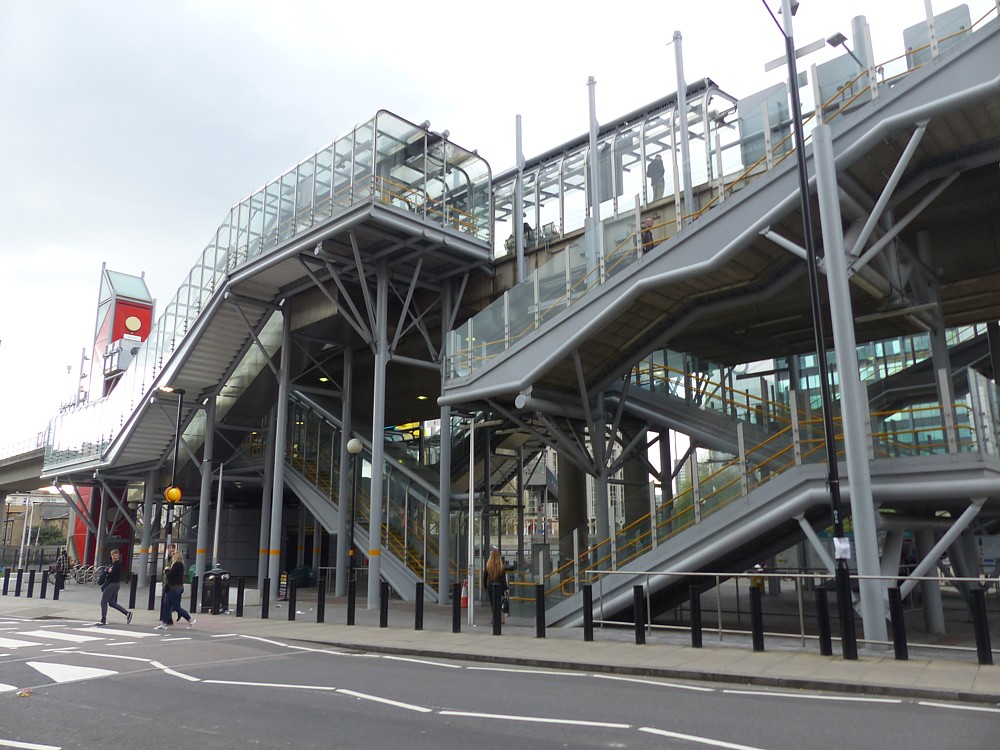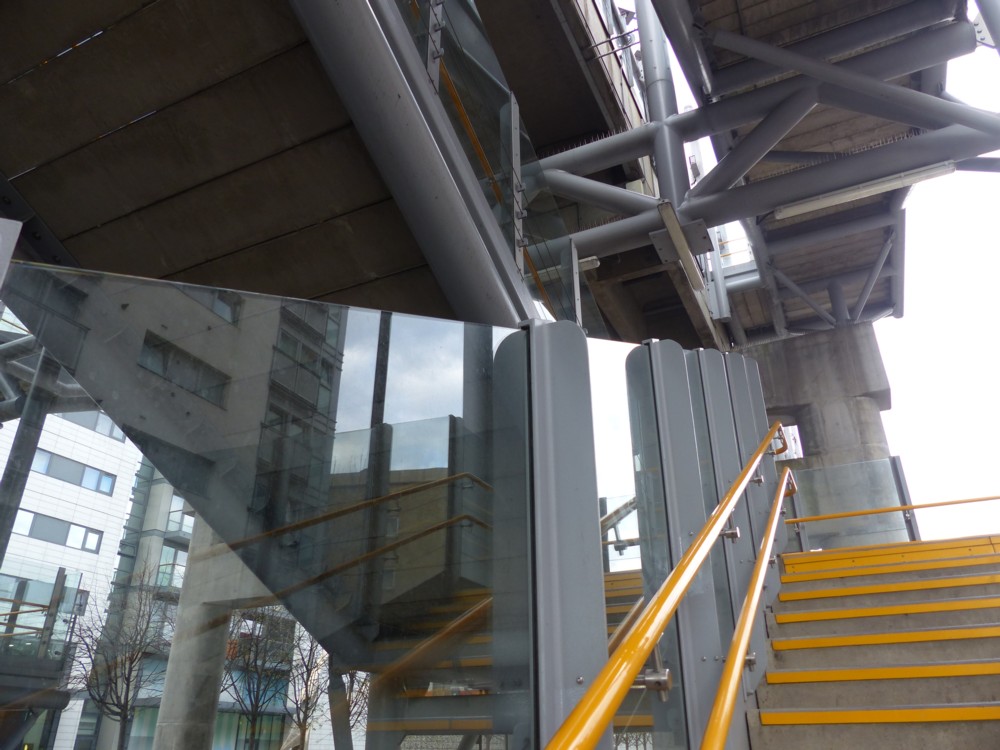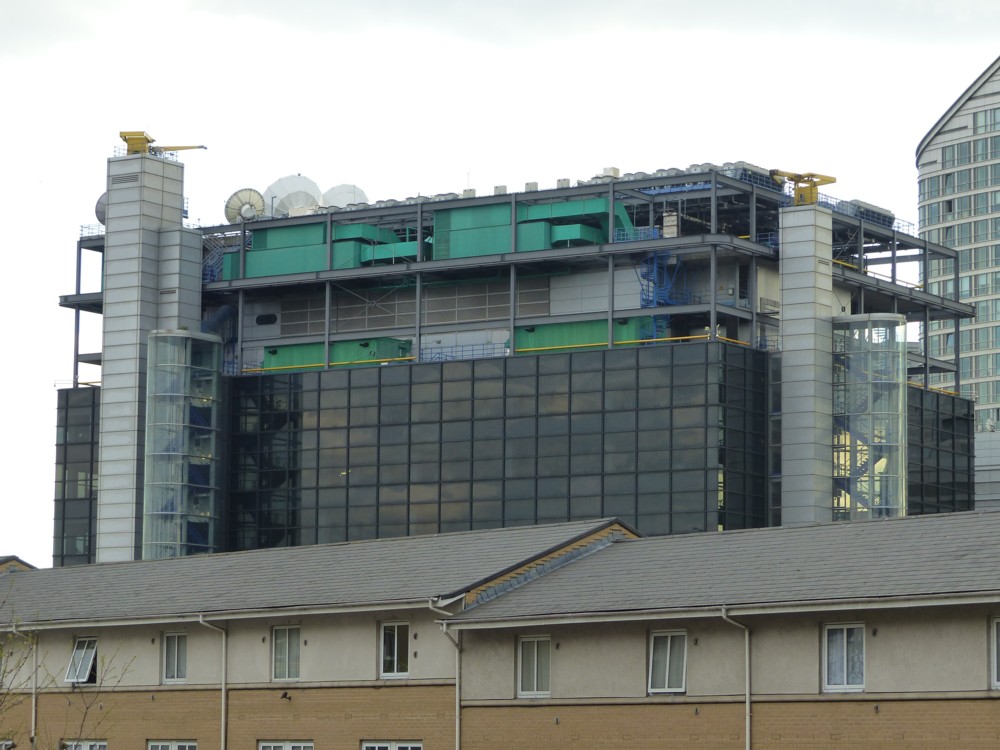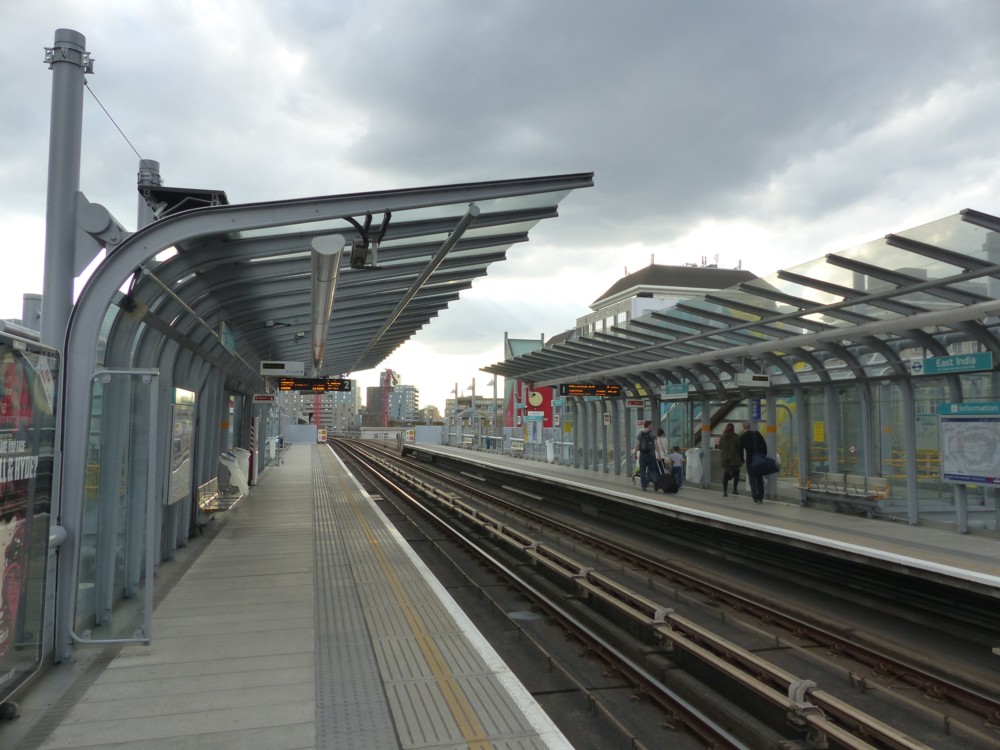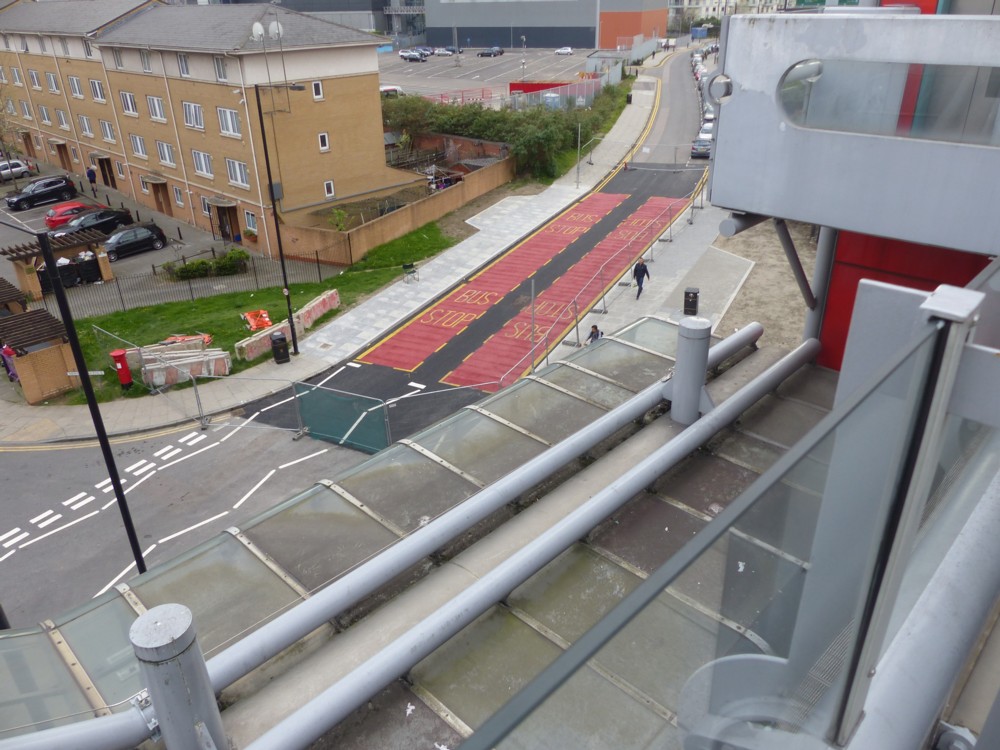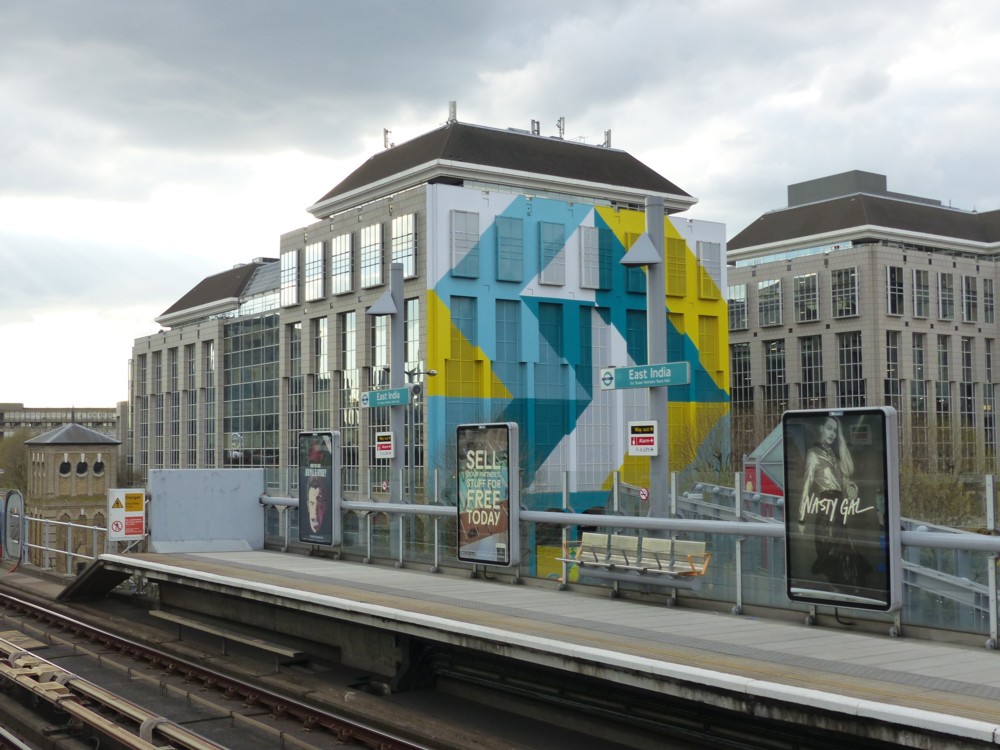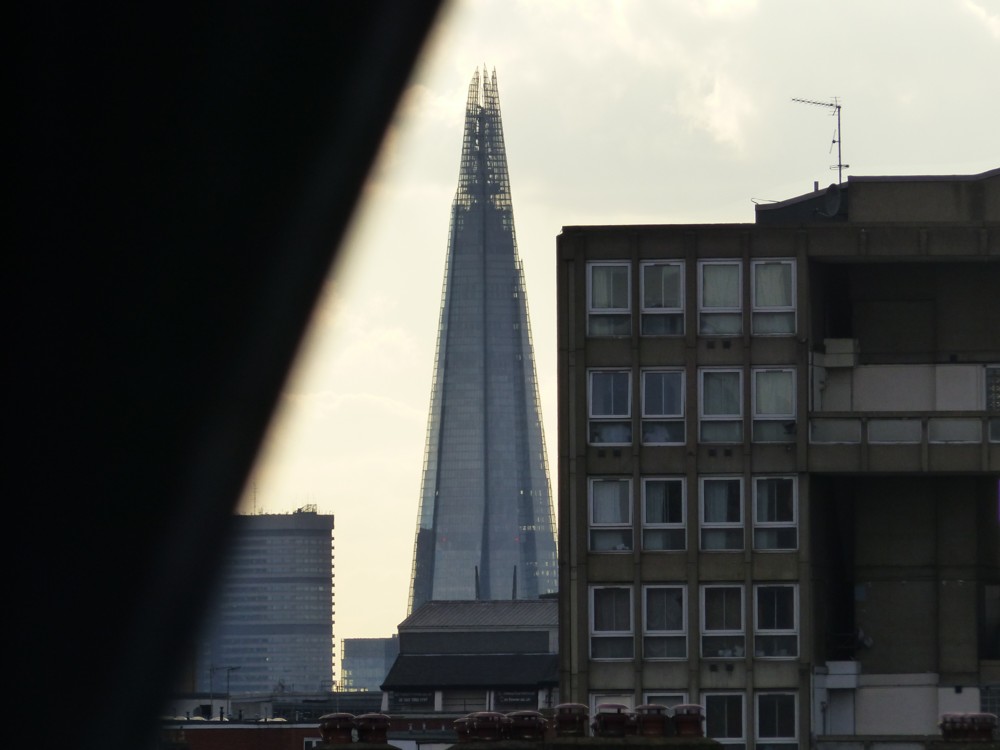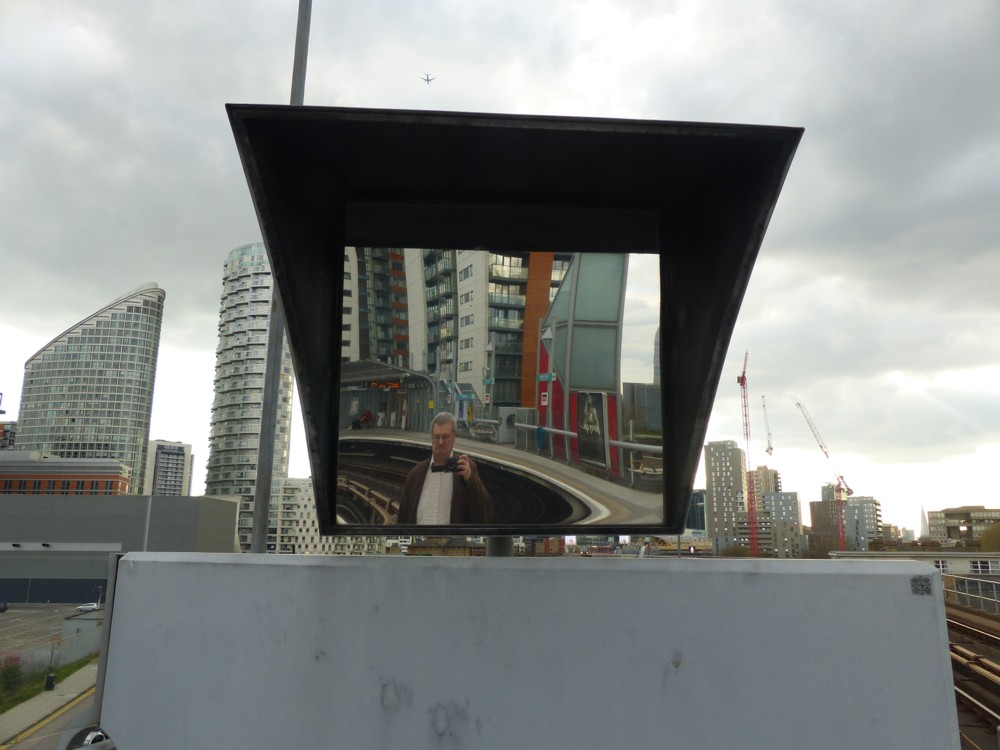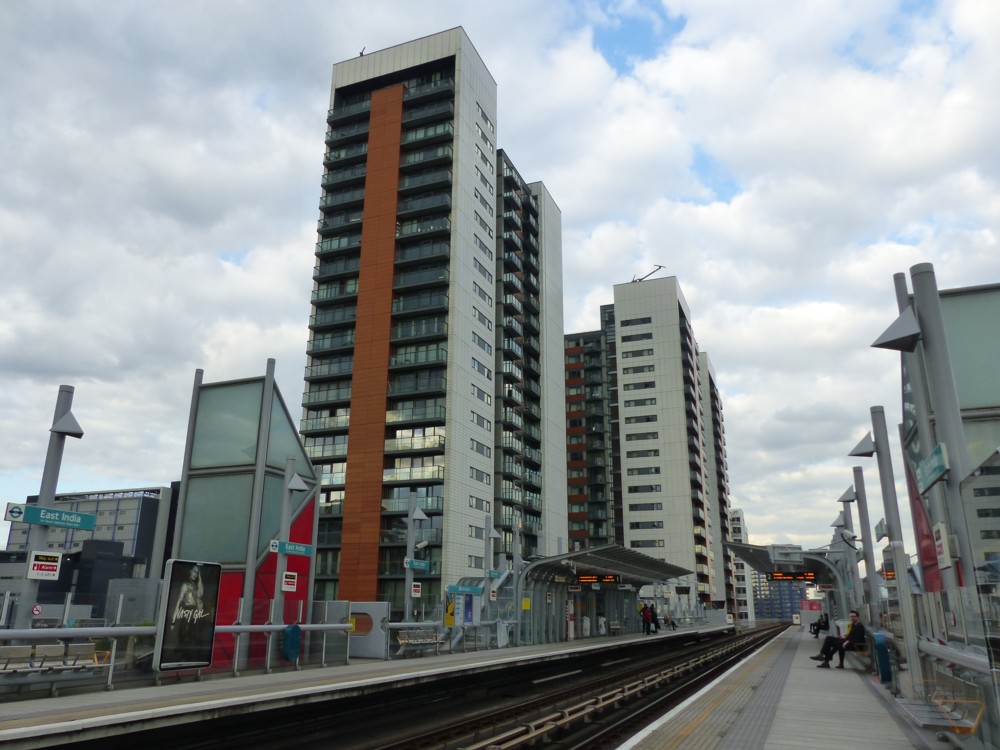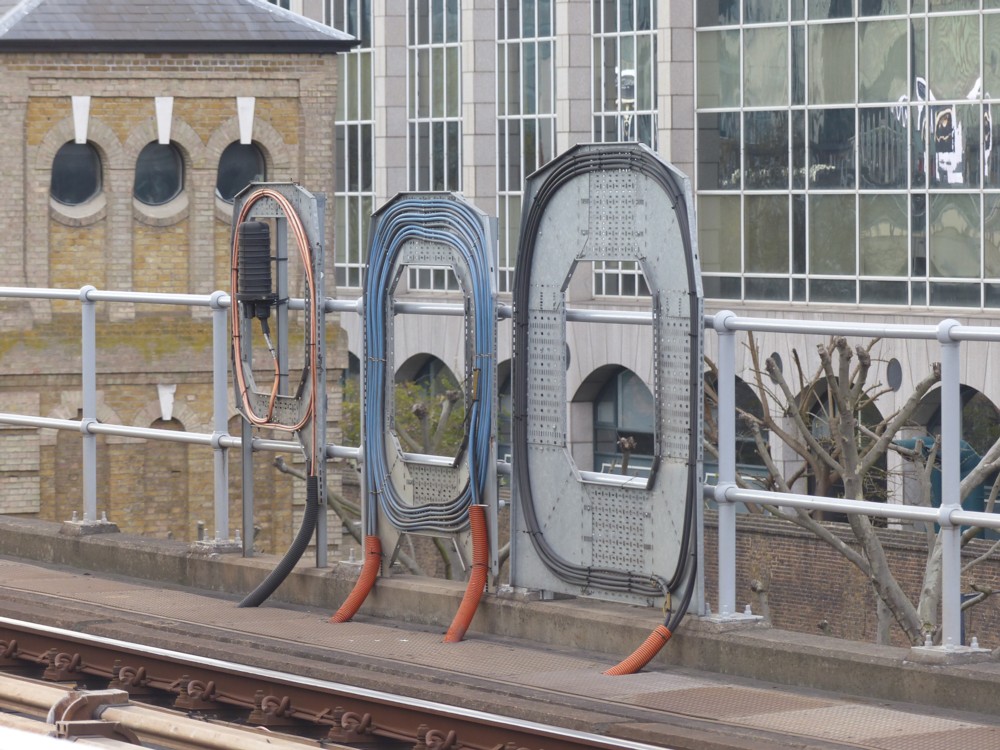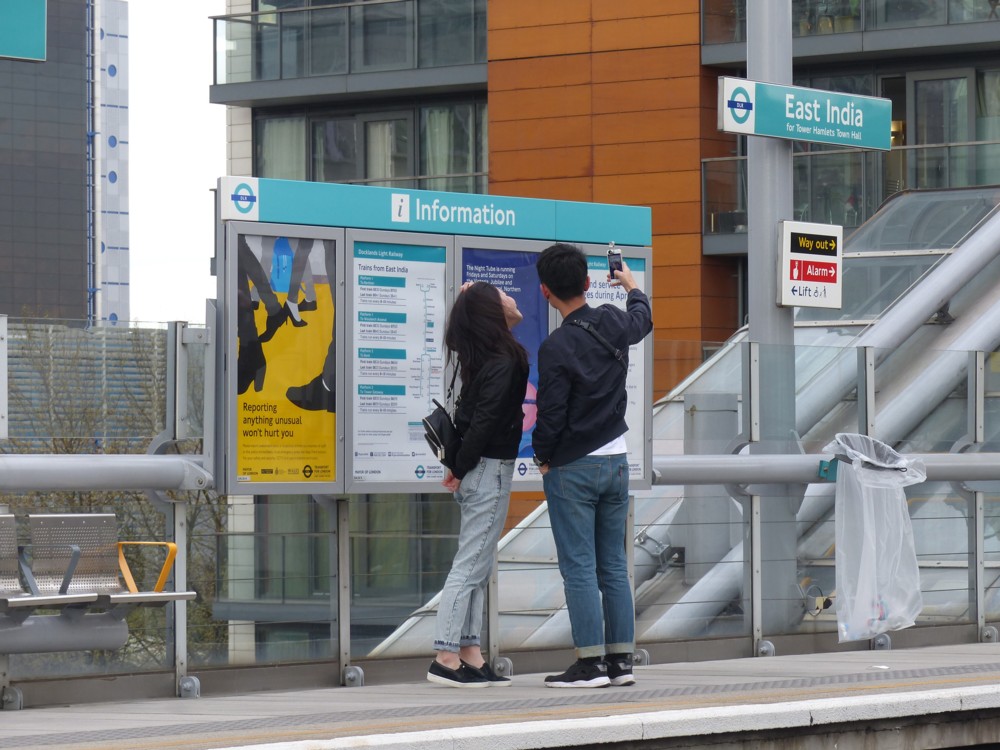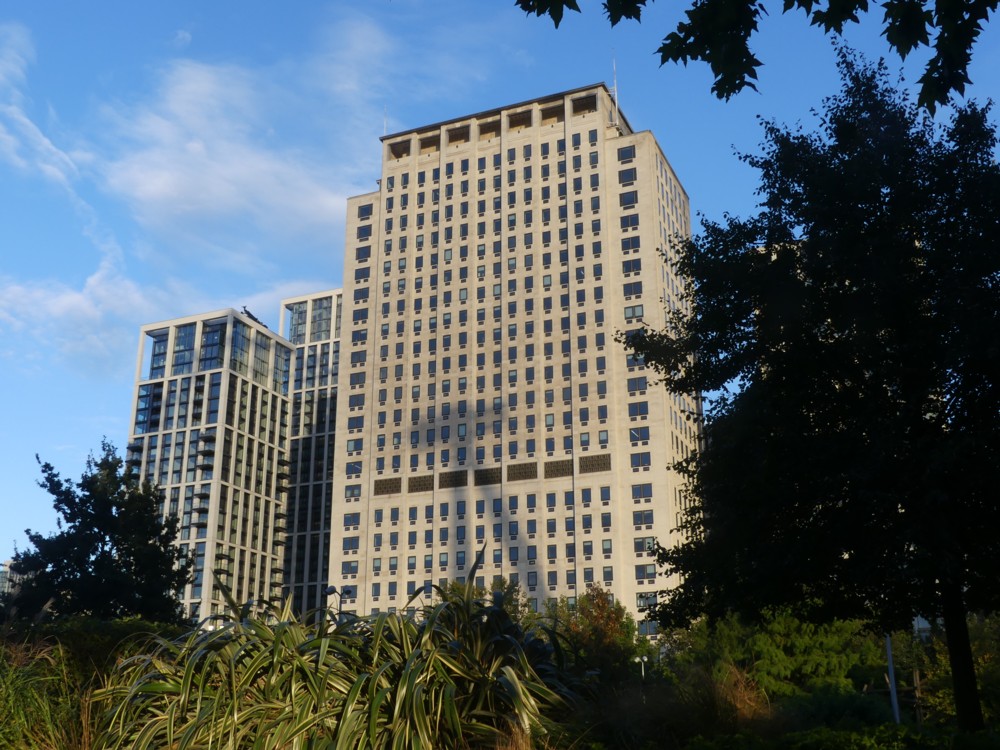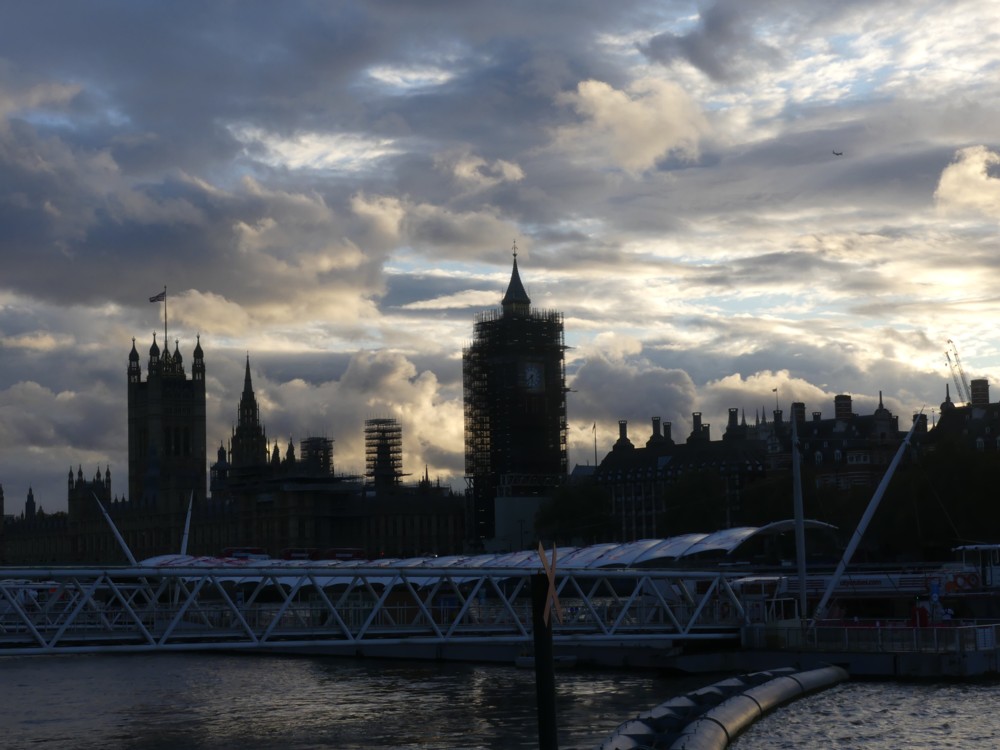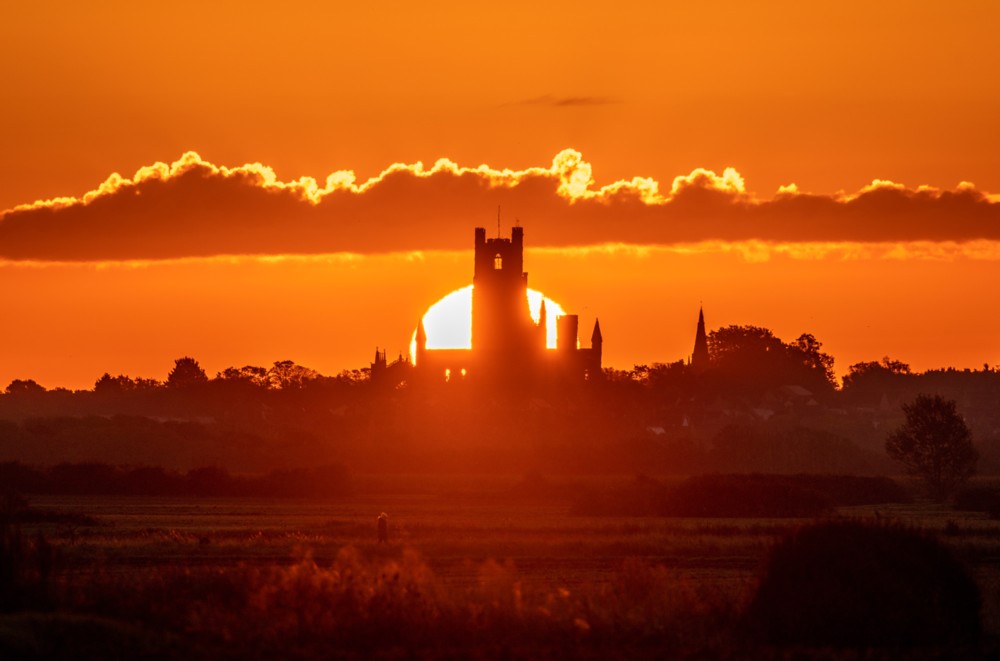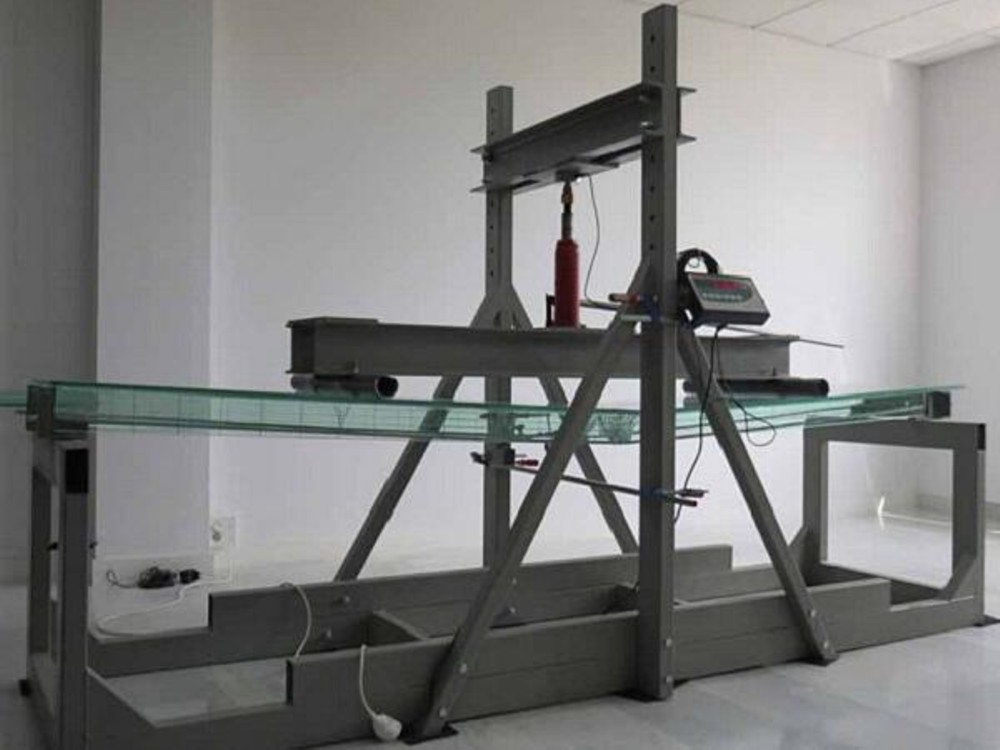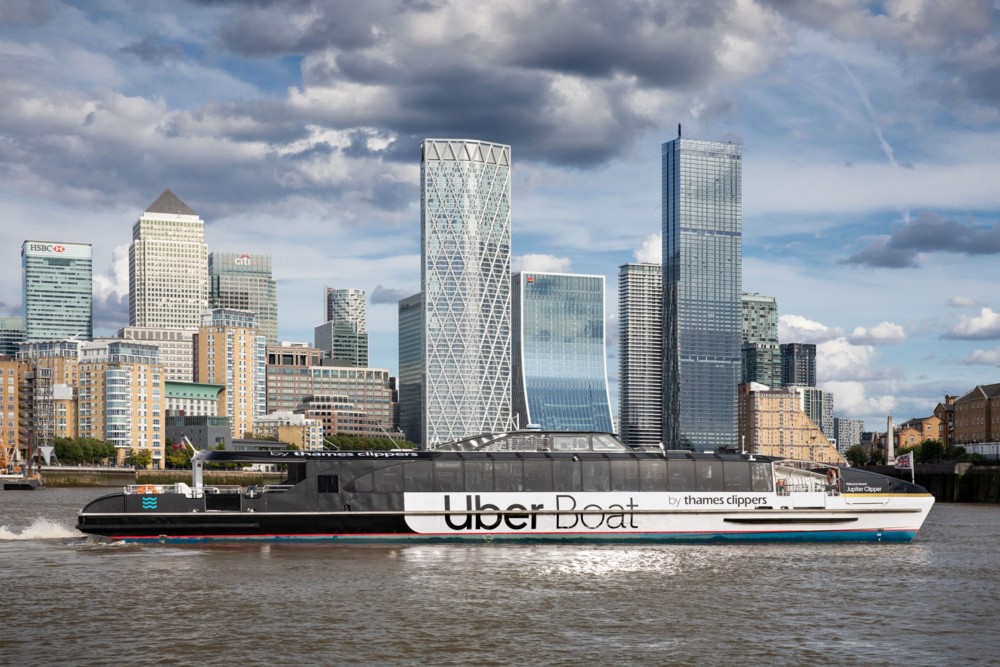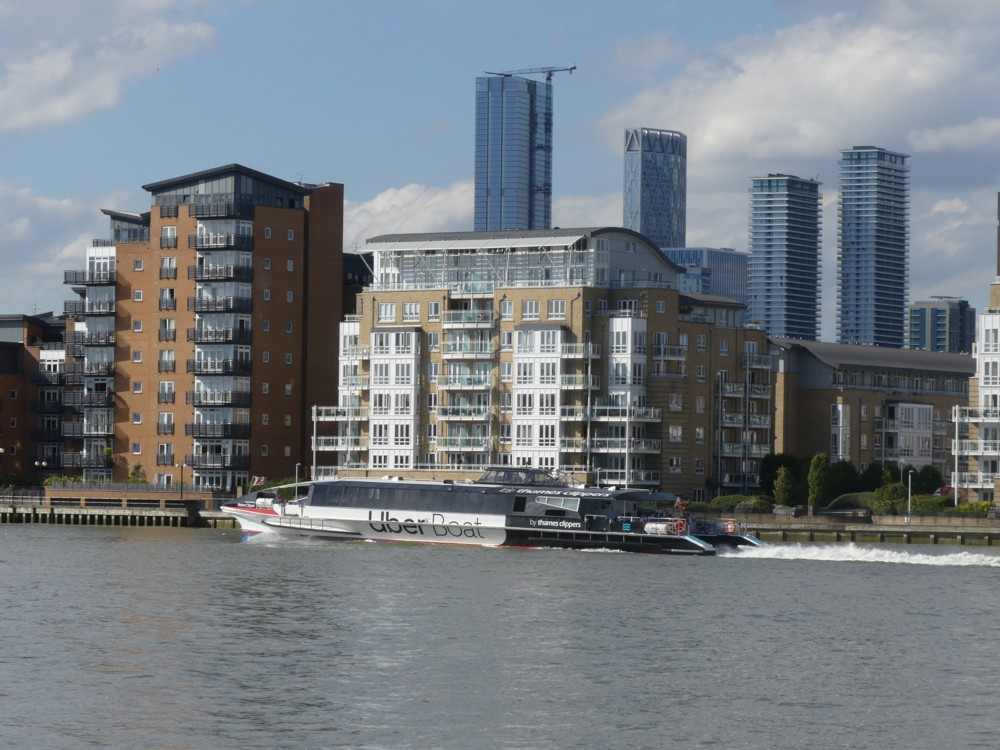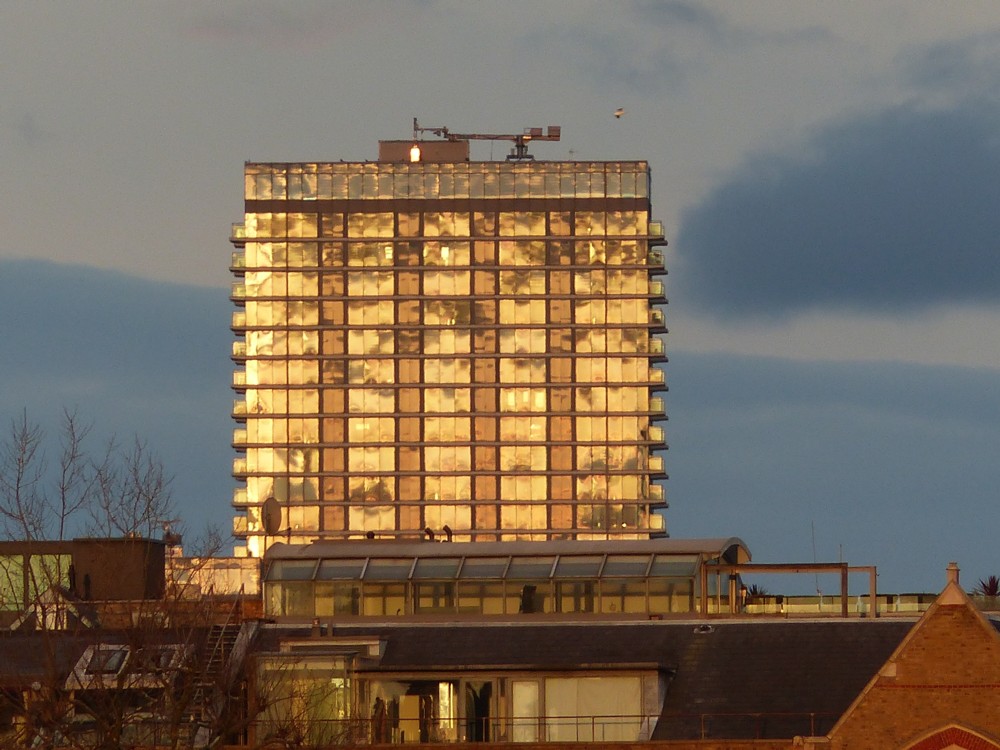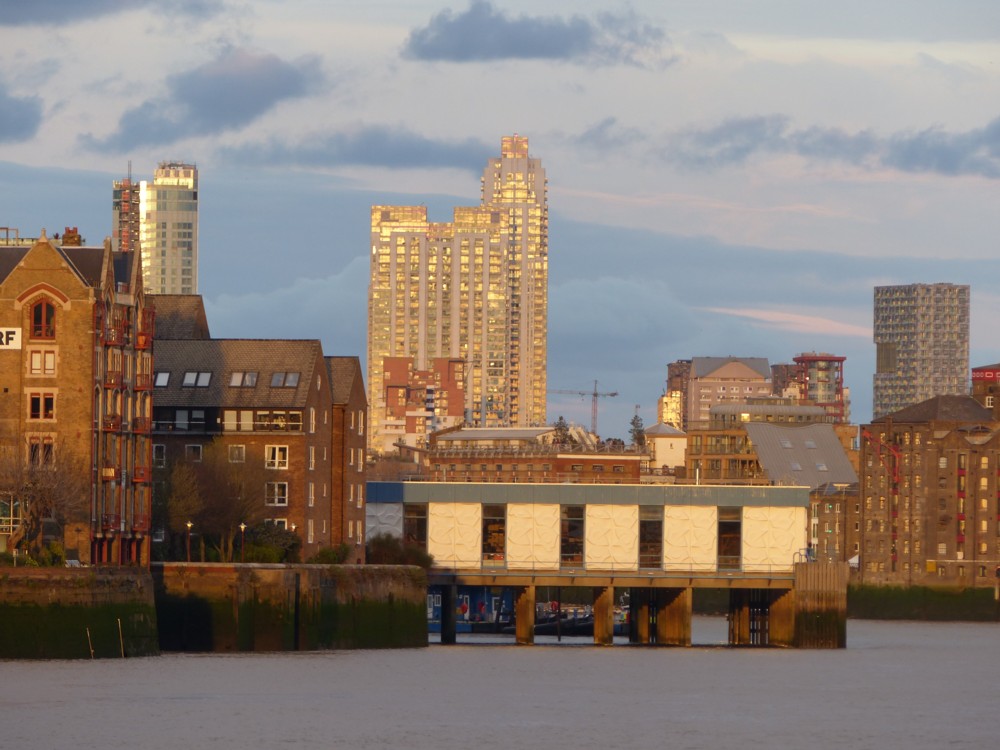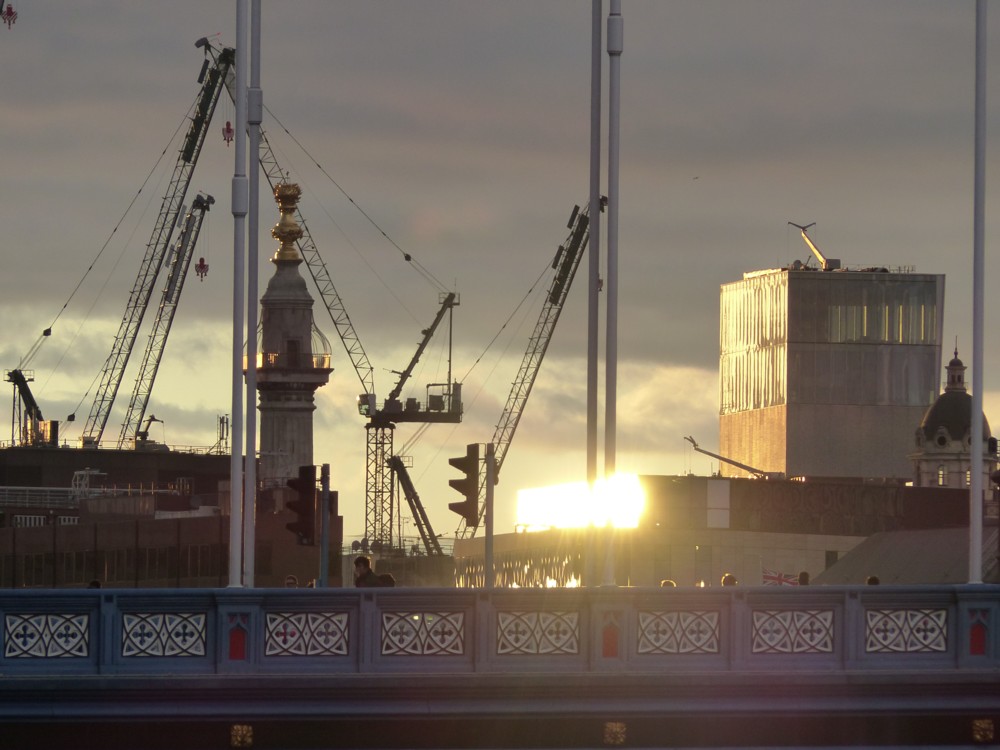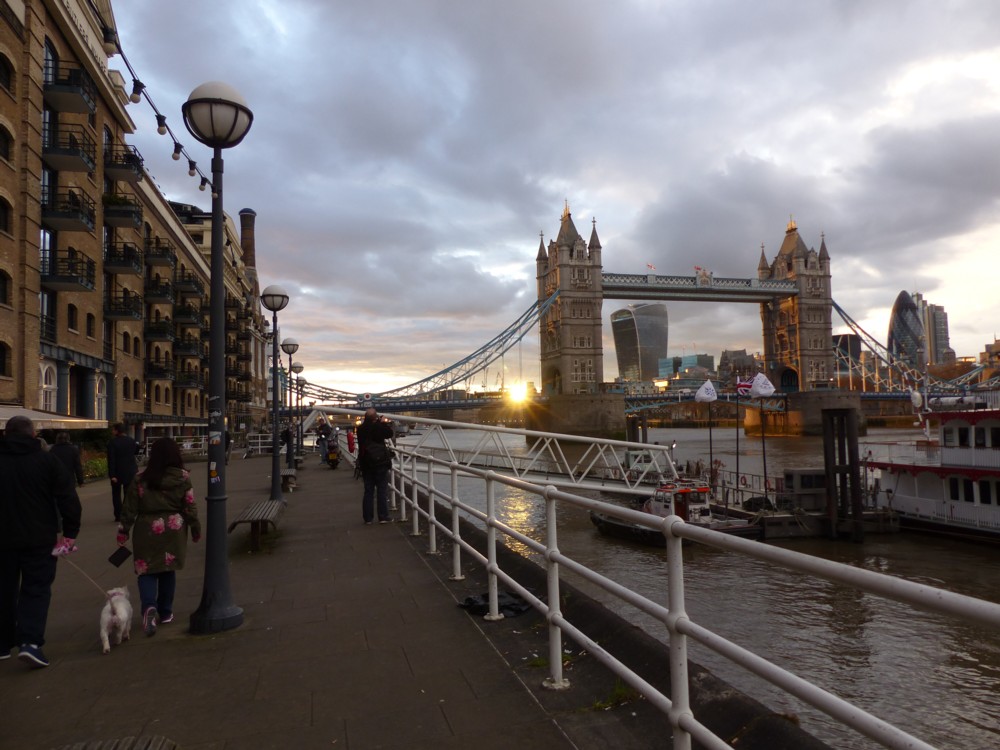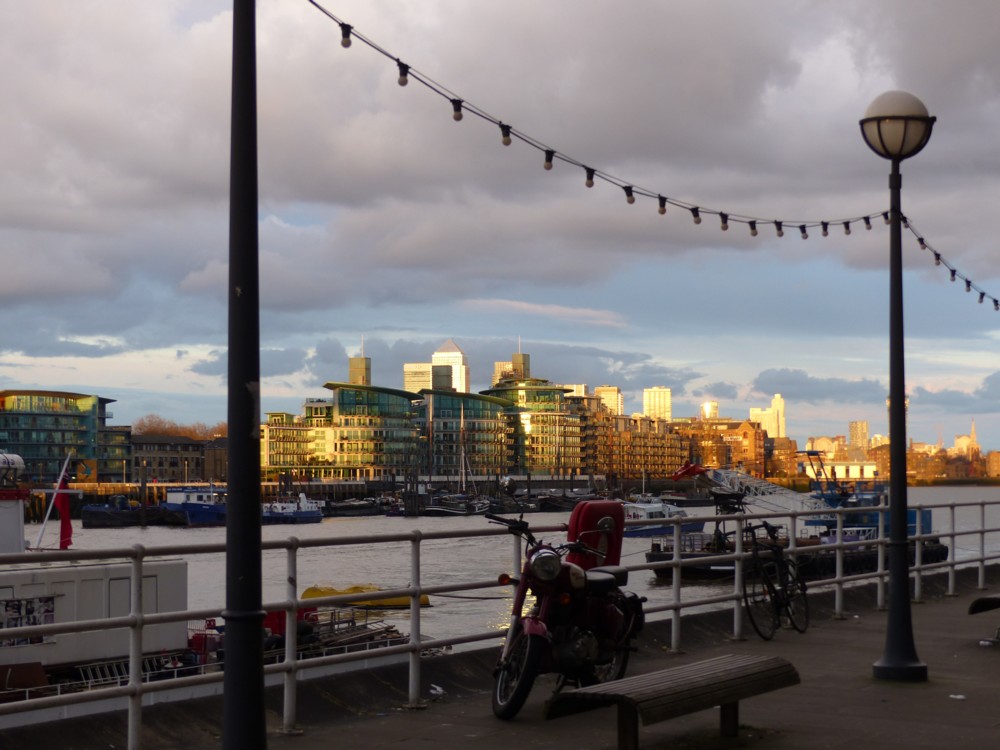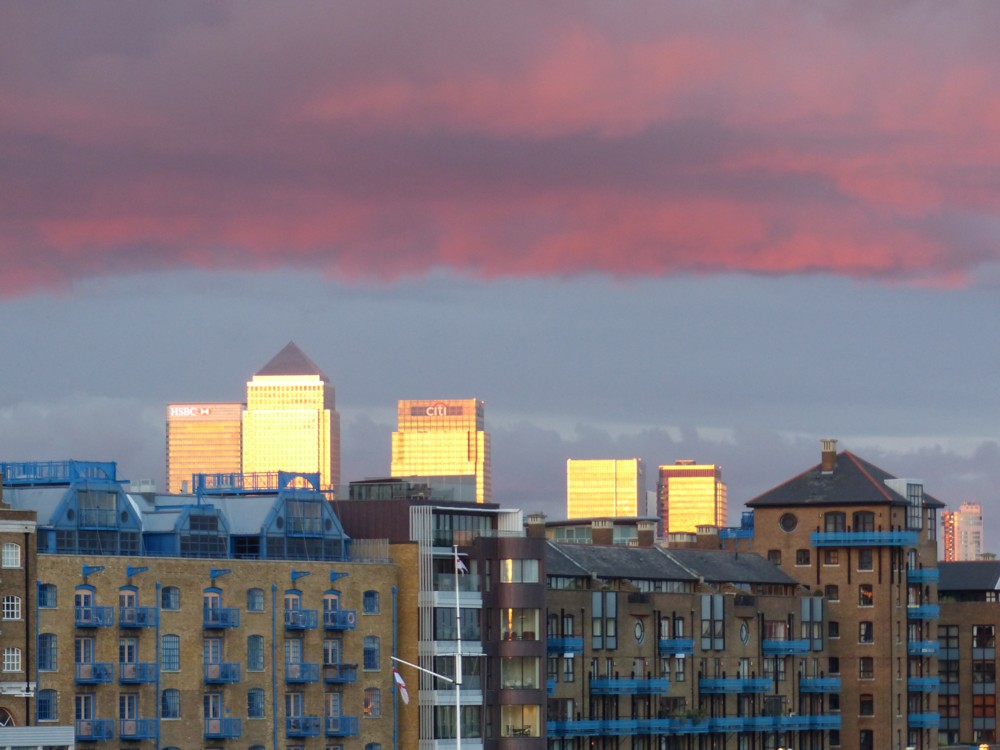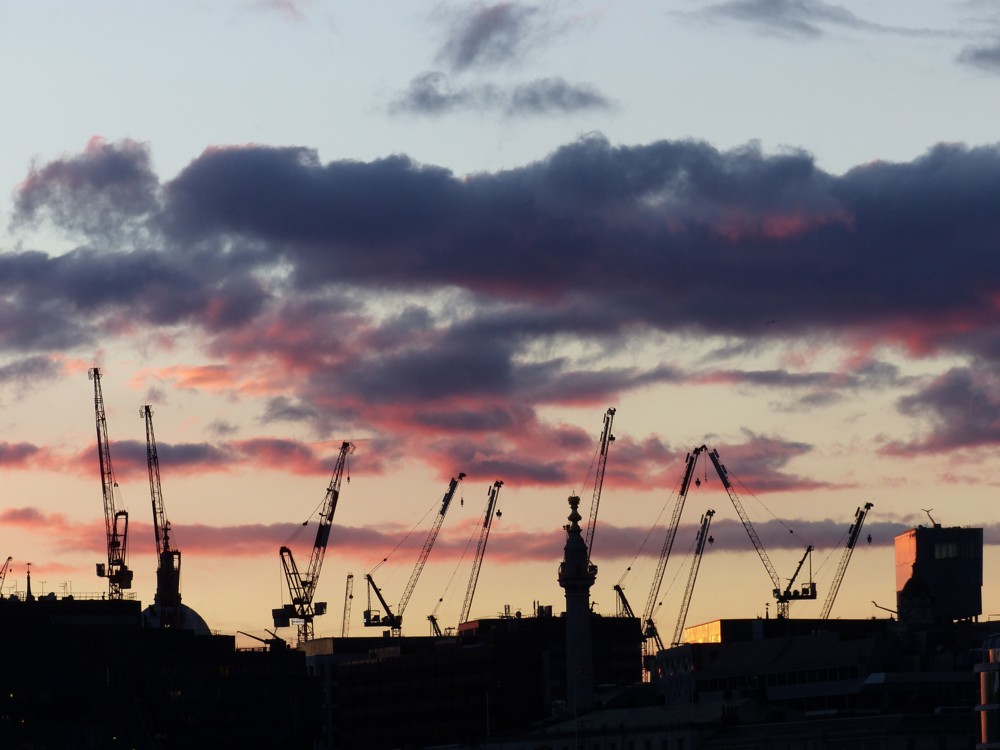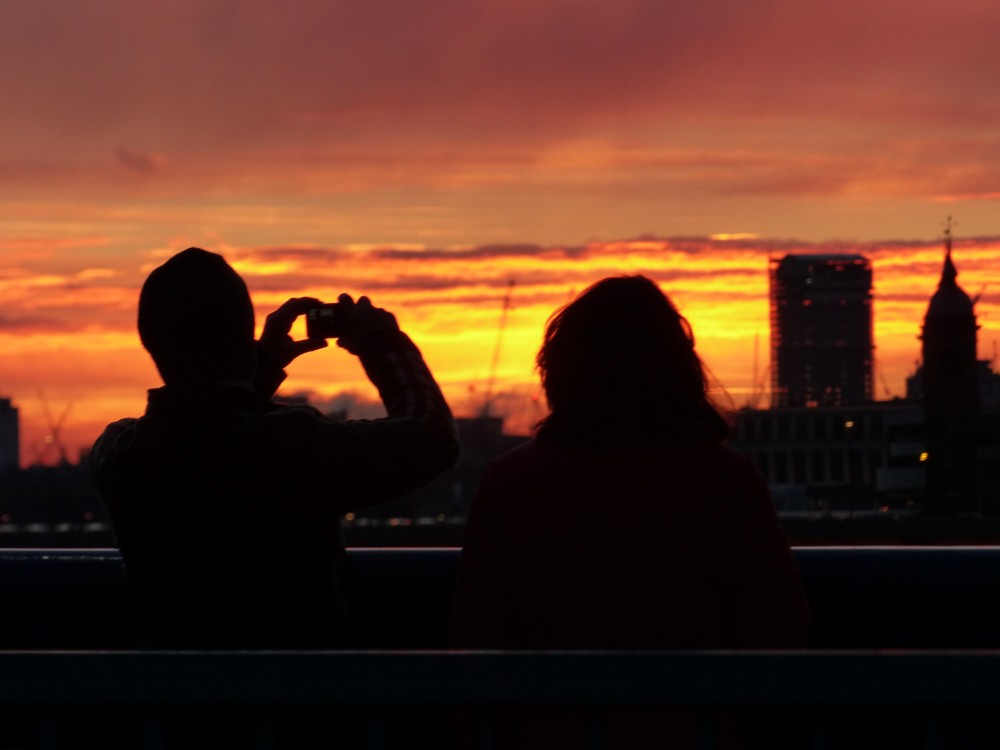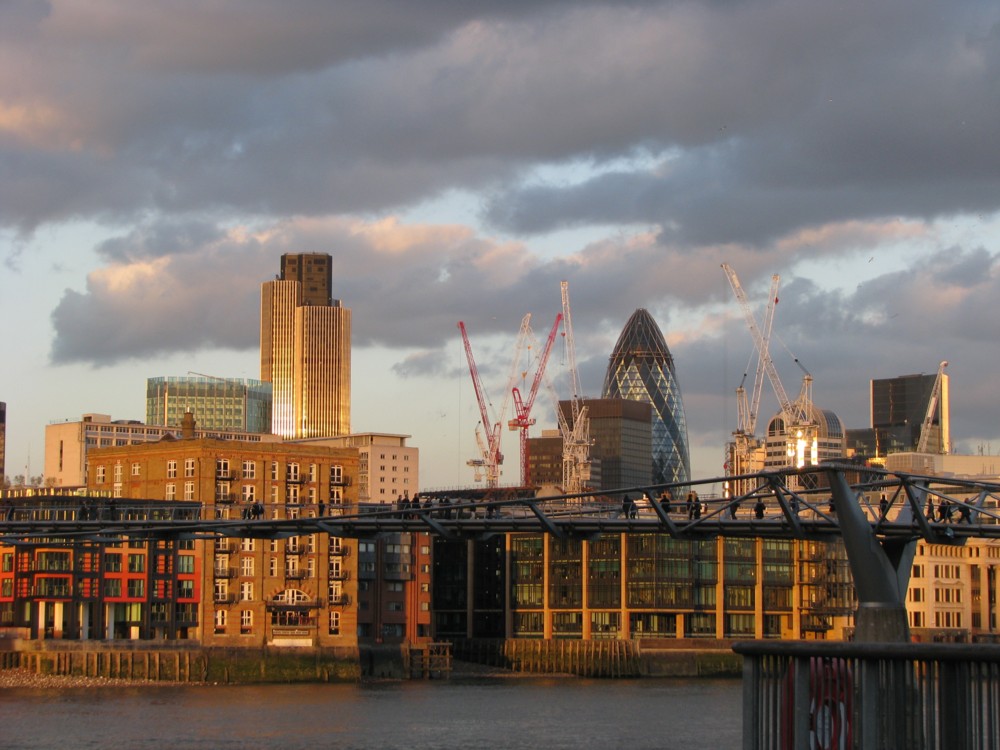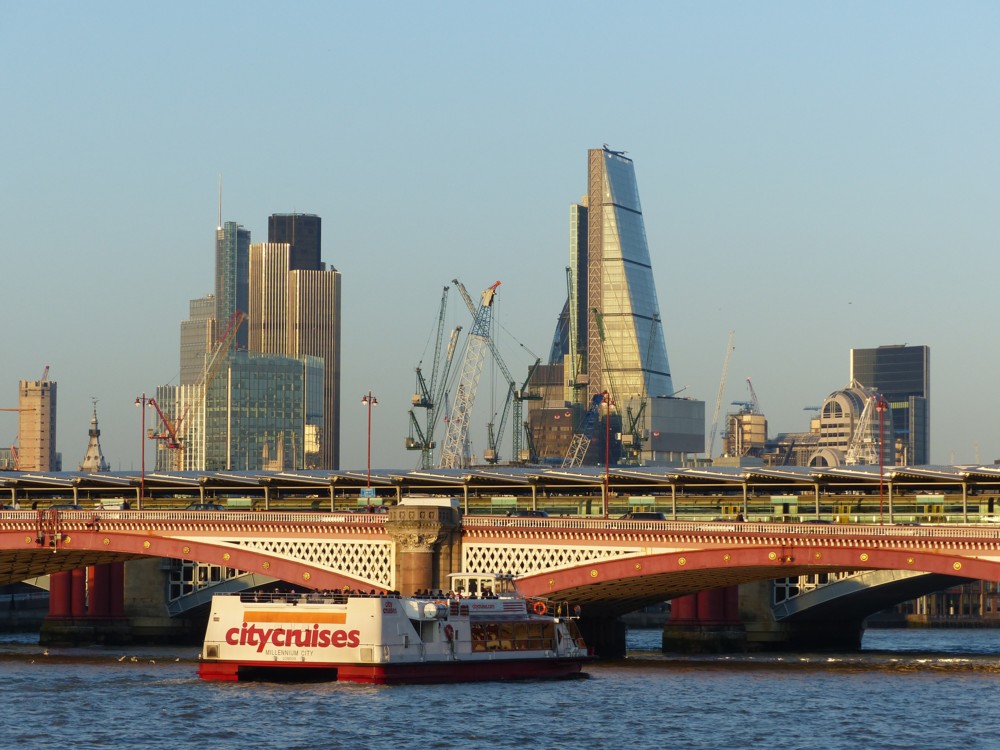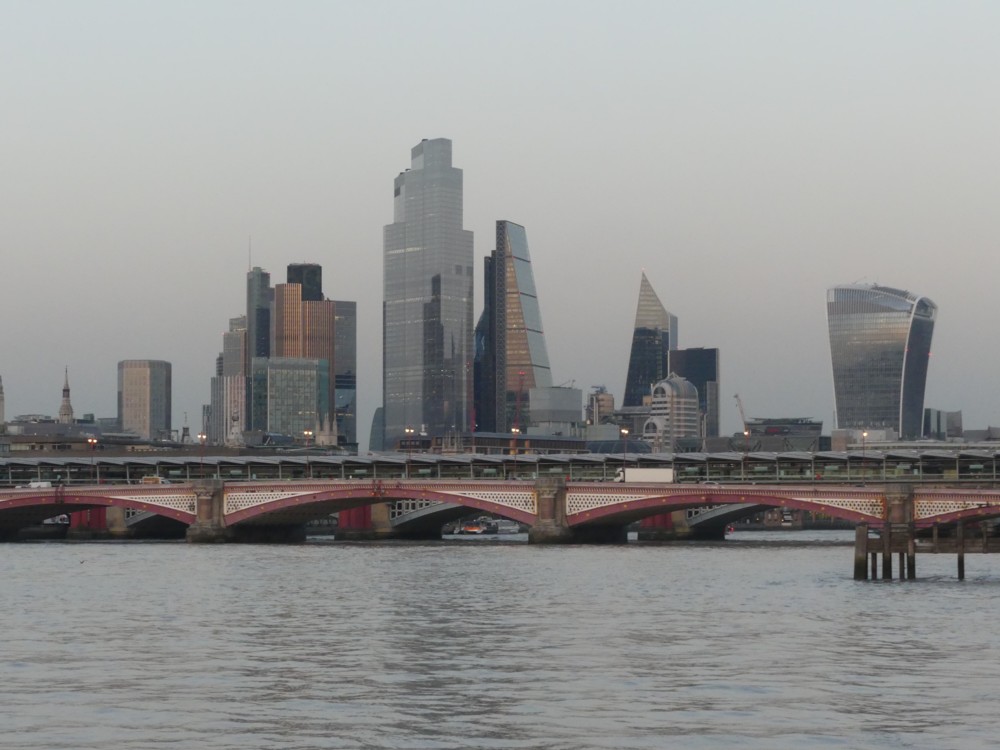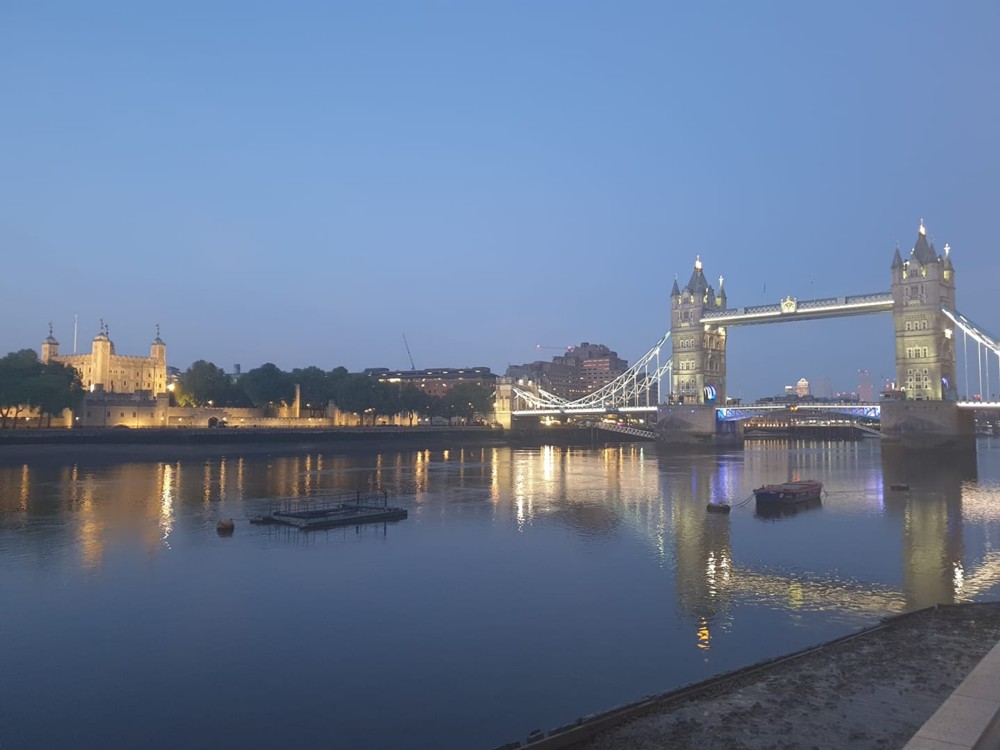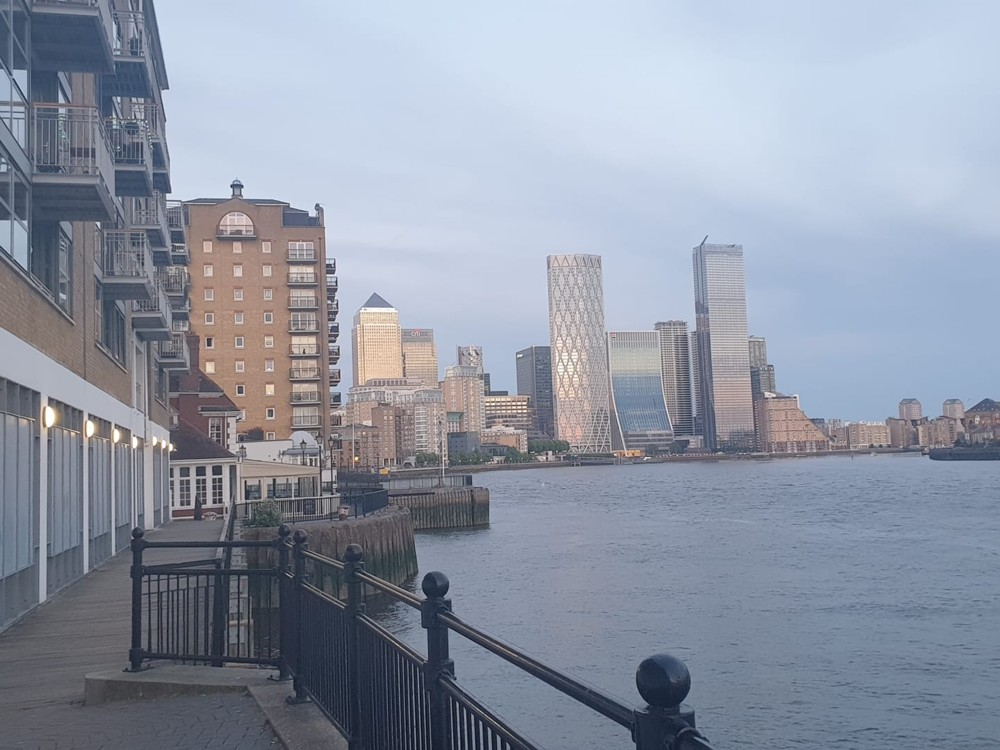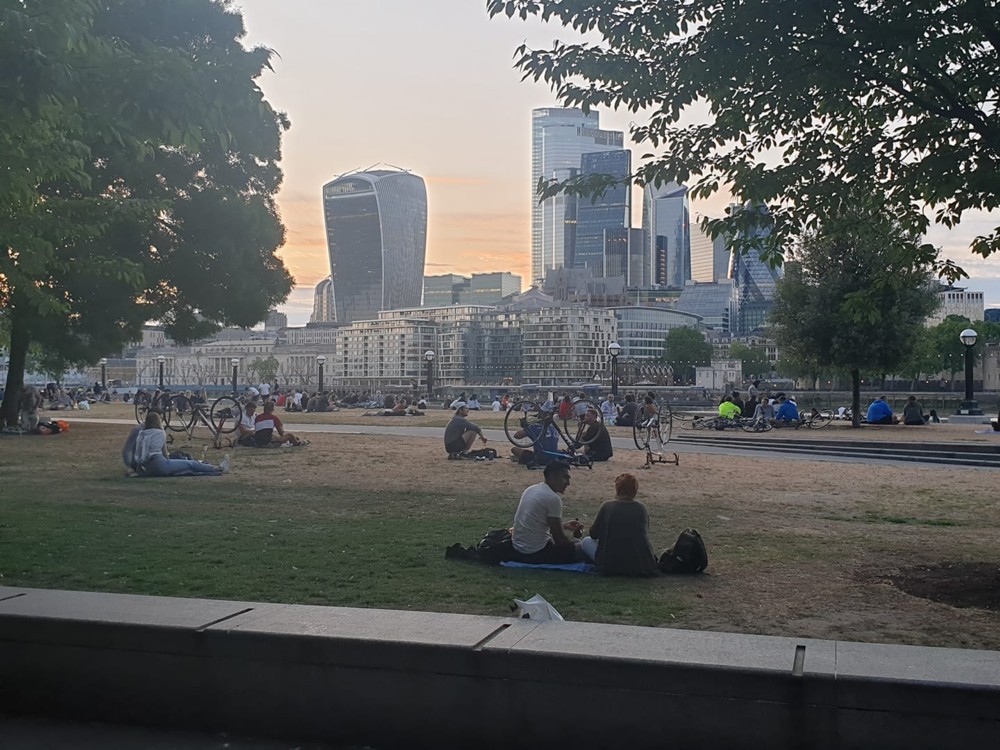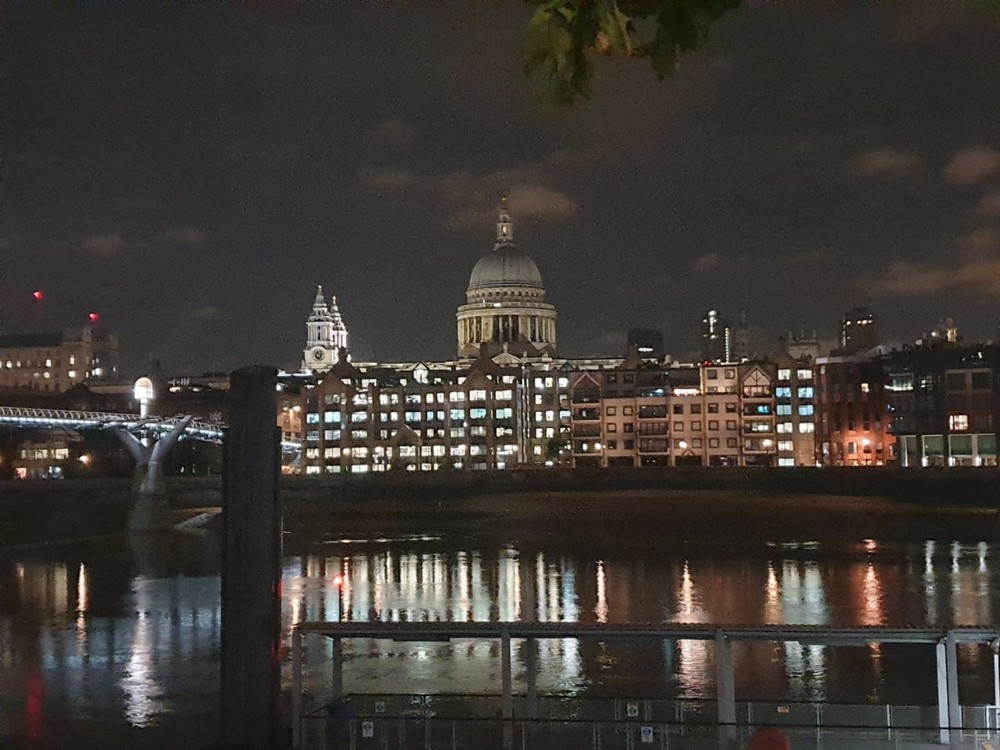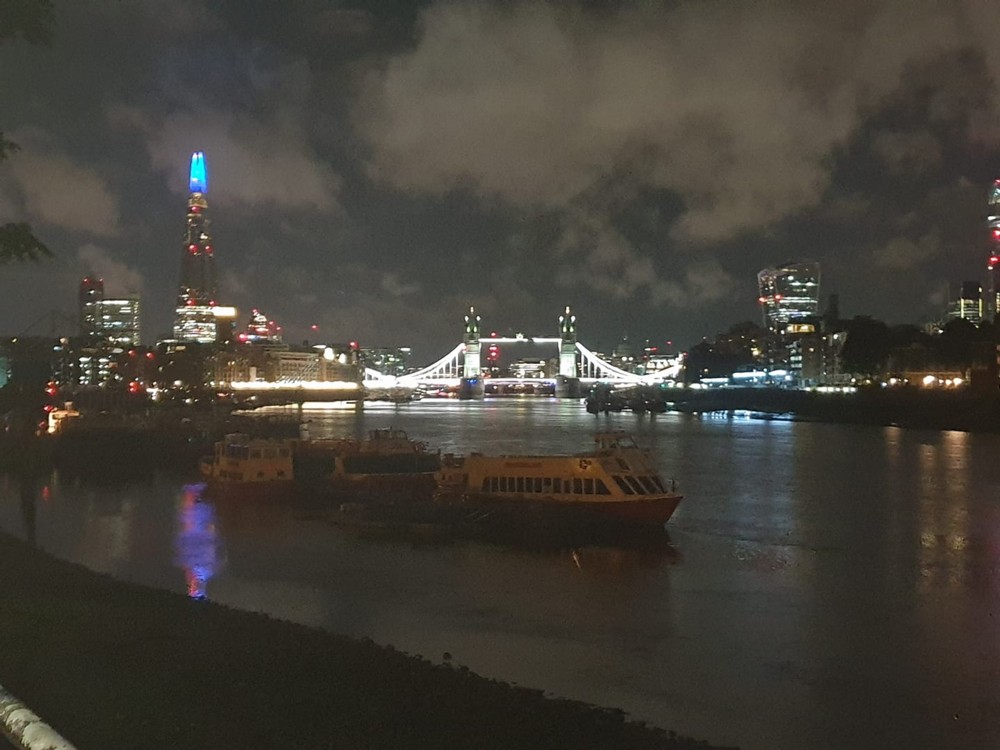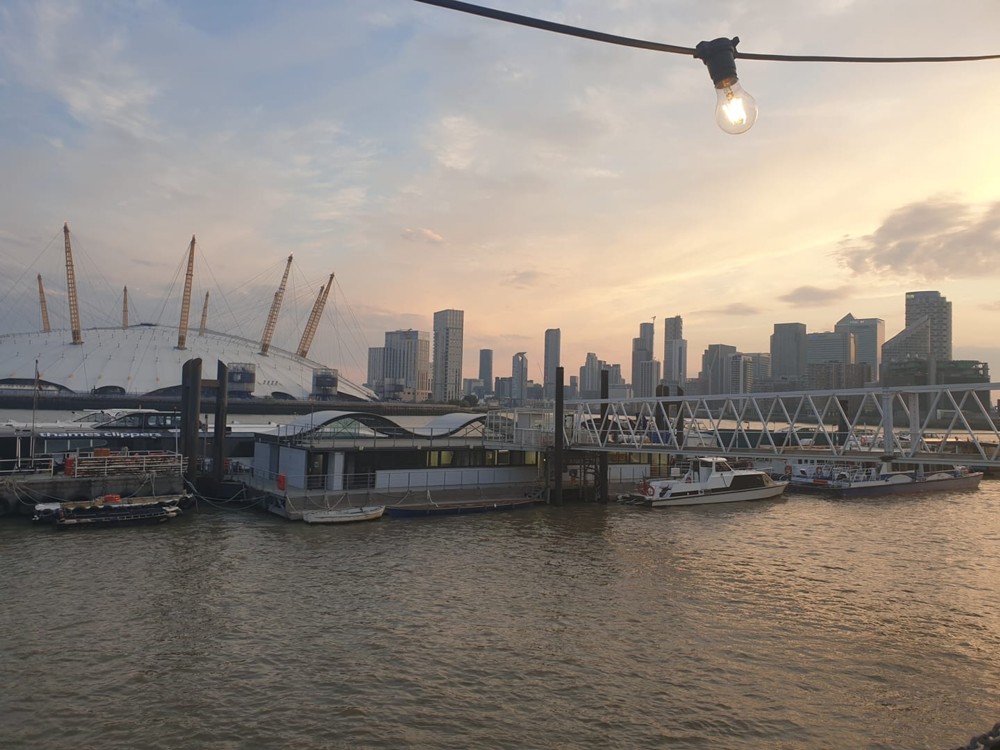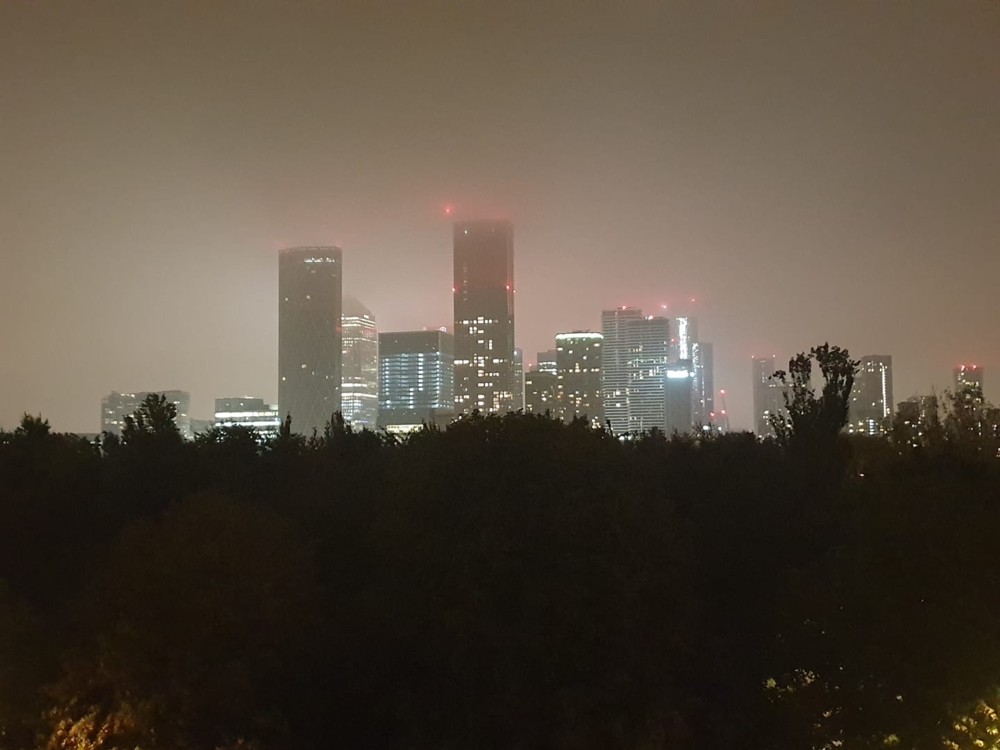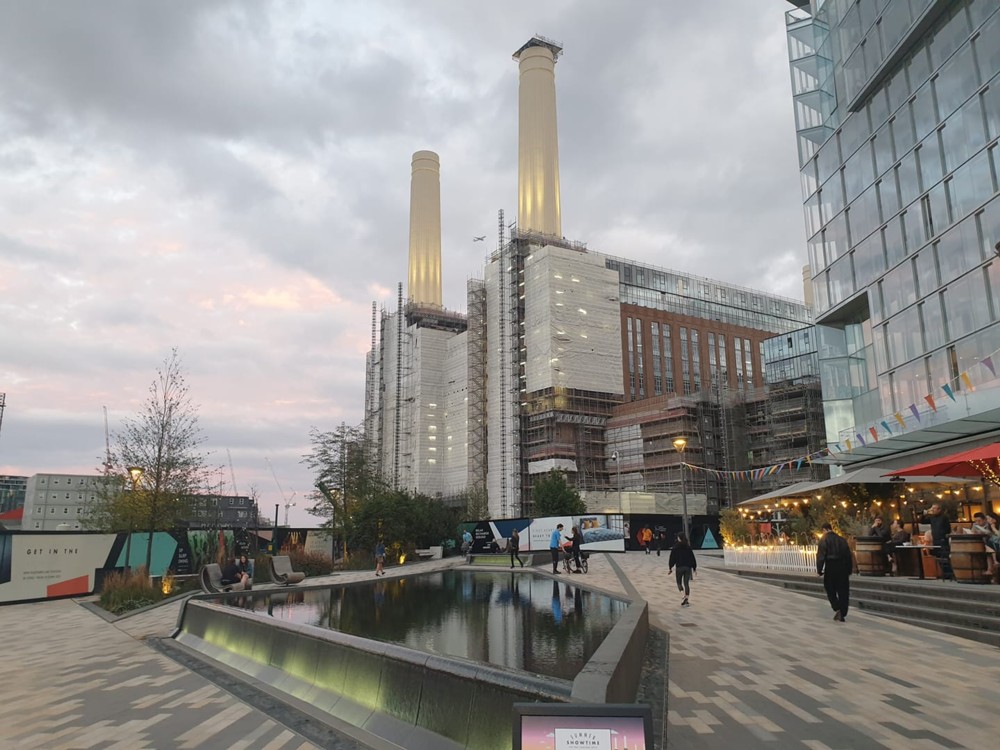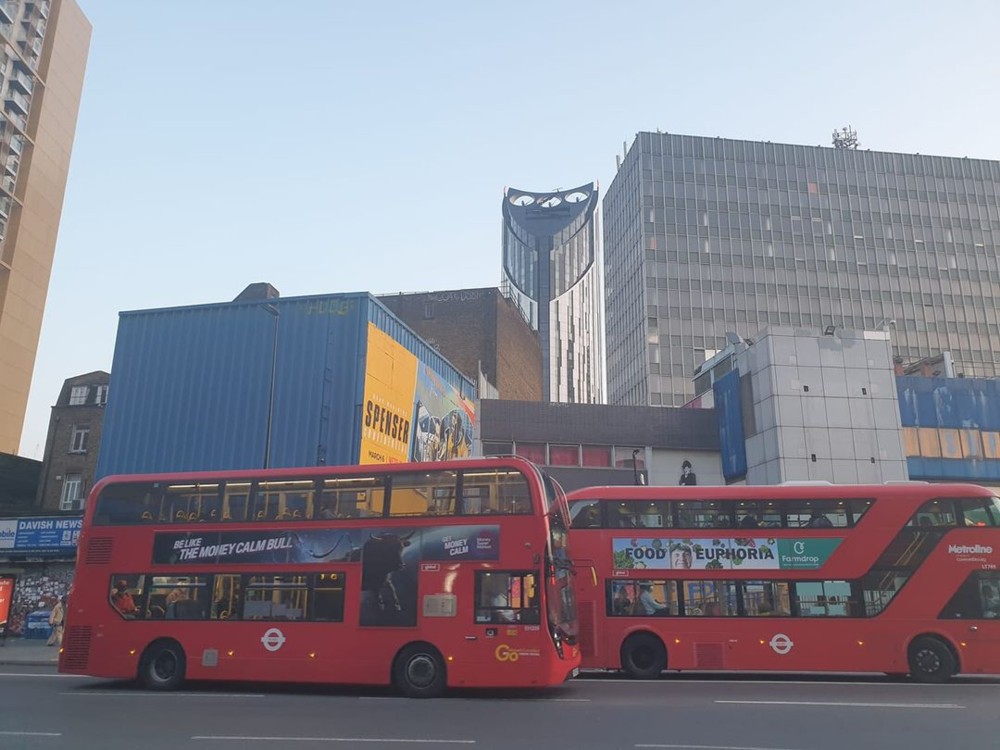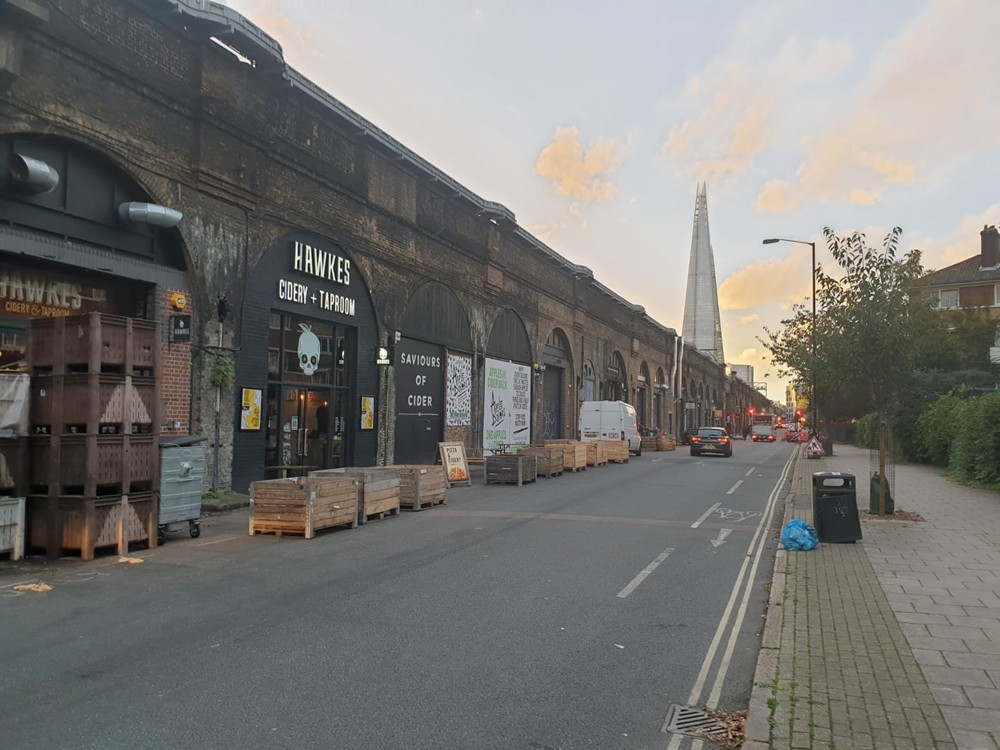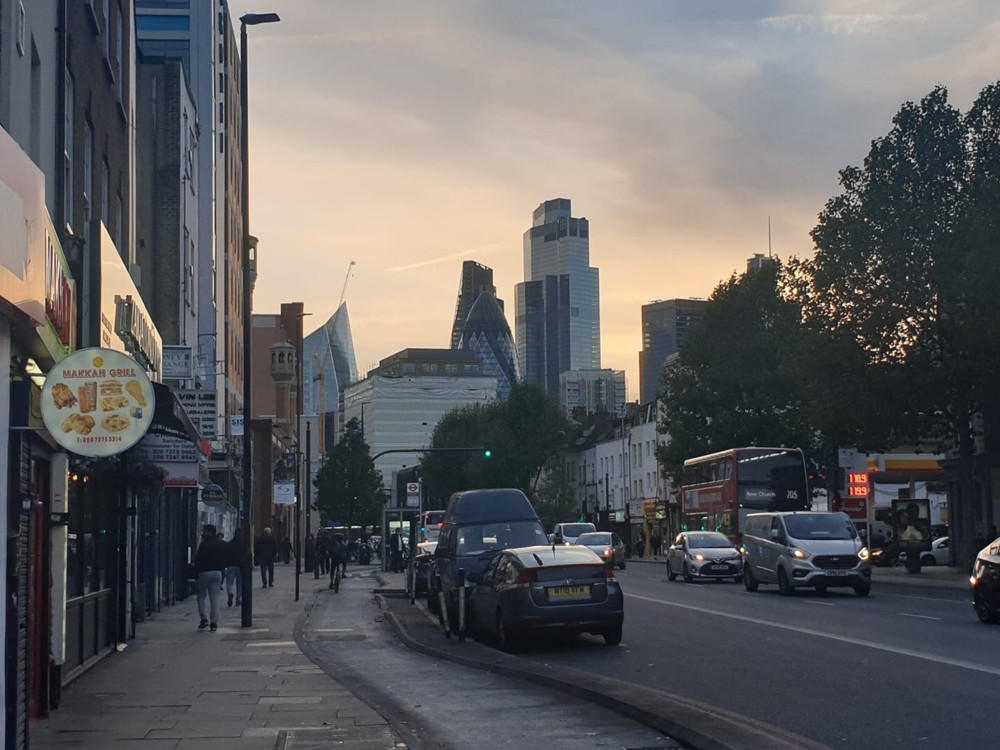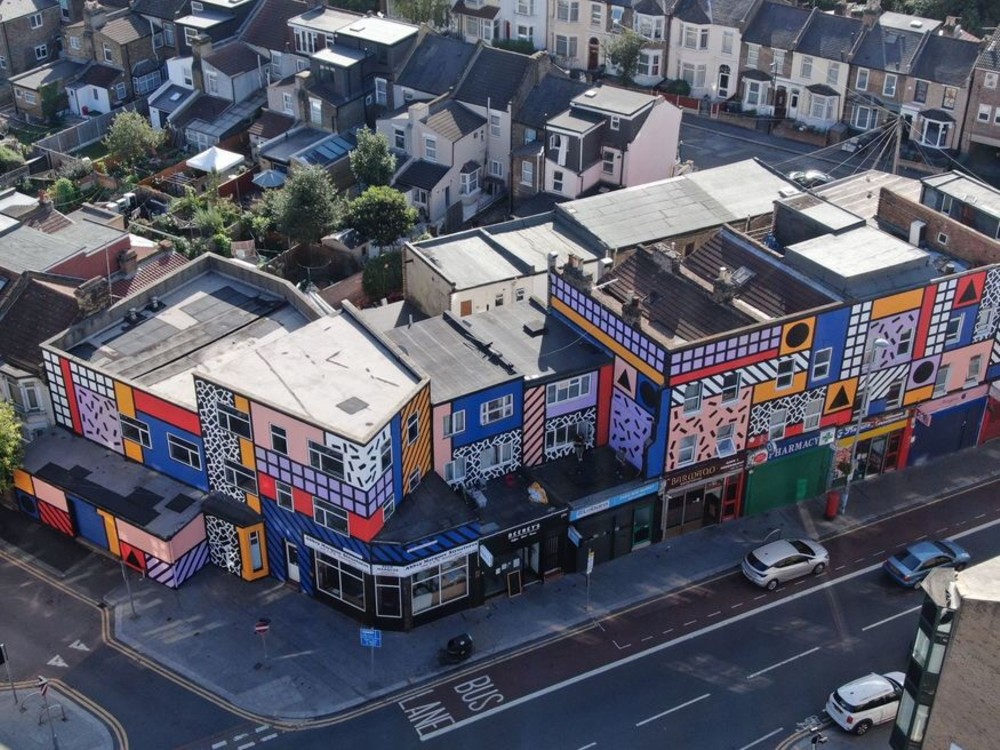Yes, it’s 2017 again, April, and I’m on my way home after a hard afternoon’s photoing out east. I get to that moment when suddenly, snap, my energy is all gone, and I just want home. So I drag myself to the nearest rail station. And this time, that rail station was East India:
Something to do with the East India docks, I presume.
Why show photos of that? Well, London can’t be all spectacular Big Things and lavish world renowned river views. Much of the secret of great cities is the amount of humdrum and utterly replaceable stuff they contain, and replaceability equals growability. A city can’t be great if it’s not growing, and it can’t grow if everywhere in it is finished.
As for the architecture, if that’s the word, of places like this DLR station, that’s now reached that awkward spot of being too new to be old and picturesque, but not new enough actually to be new any more, like pop music that your elder brother likes.
Which means it’s architecture that nobody (apart from me) thinks worth photoing. People just use it constantly, and forget about it. But there it is. One day some of it will be old and picturesque, and there will be complaints about it being torn down to be replaced by further humdrummery, or perhaps by resplendent and finished Big Things.
Meanwhile, I find that such railway stations are not only deserving of themselves being noticed, but are often, because of being elevated (to enable their tracks to go over existing roads) very good spots for noticing other things. Like the Shard (8), or that building rather cheerfully tricked out in yellow, green and blue (7). The building in (4) was trying hard to look good also, even if I reckon it failed. Or how about that strange bus stop road colouring that looks like a carpet has been unrolled (6)?
I’ve never understood those strange rolls of wire that you see beside railways (11). Is that for if they find they need more wire, which they can then pull towards them through tubes? That would make sense.
I do understand selfies, and the hair pats that so often go with them (12). I reckon they were lining themselves up with the Shard.
Perhaps most diverting of all, to me anyway, is the contrast between the extreme fussiness and complexity of the main body of this thing (1) (2) (3), with all its “expressed” structure (think of the just-that-bit-earlier-than-this Lloyds building in the City), with the relative banality of what the fuss is all in aid of (5). The architects of these places had their heads full of bigger, more award-winning Things than they were allowed actually to build, as architect heads so often are.

